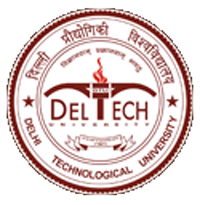Please use this identifier to cite or link to this item:
http://dspace.dtu.ac.in:8080/jspui/handle/repository/21606Full metadata record
| DC Field | Value | Language |
|---|---|---|
| dc.contributor.author | YADAV, SAGAR | - |
| dc.date.accessioned | 2025-06-02T06:13:46Z | - |
| dc.date.available | 2025-06-02T06:13:46Z | - |
| dc.date.issued | 2025-06 | - |
| dc.identifier.uri | http://dspace.dtu.ac.in:8080/jspui/handle/repository/21606 | - |
| dc.description.abstract | This study investigates the determinants of capital structure in the Indian automobile sector, focusing specifically on the roles of profitability and asset tangibility in shaping the debt-equity choices of listed firms from 2015 to 2024. The research is motivated by the sector’s economic significance and the dynamic financial environment in which these firms operate, marked by technological disruptions, regulatory changes, and macroeconomic shocks. Despite a wealth of theoretical and empirical literature on capital structure, the applicability of established frameworks—such as the Pecking Order Theory and Trade-Off Theory—remains insufficiently explored in the context of India’s rapidly evolving automobile industry. This project aims to fill that gap by providing a comprehensive, data-driven analysis of how firm-specific and industry-wide factors influence financing decisions during a period of significant transformation. The study adopts a quantitative, deductive research design, leveraging a balanced panel dataset of 11 major listed automobile manufacturers operating continuously throughout the decade. The sample selection ensures representation from all major segments of the industry, including passenger vehicles, commercial vehicles, two wheelers, and emerging electric vehicle players. Secondary data is sourced from the ProwessIQ (CMIE) database, annual reports, and regulatory filings, capturing key financial indicators such as leverage, profitability (ROA), asset tangibility, firm size, growth opportunities, and tax shield benefits. The research employs panel data regression techniques, to control for unobserved heterogeneity across firms and to identify the true impact of time-varying explanatory variables. Descriptive analysis reveals substantial variation in capital structure strategies across firms, reflecting differences in business models, risk appetites, and market positioning. Correlation analysis indicates a significant negative relationship between profitability and leverage, and a positive association between firm size and leverage, while the relationship between asset tangibility and leverage is less pronounced. The regression results confirm that profitability is a robust and statistically significant negative predictor of leverage, providing strong empirical support for the Pecking Order Theory in the Indian context. Profitable firms consistently prefer internal financing, reducing their reliance on external debt. In contrast, asset tangibility, while theoretically expected to encourage higher leverage by providing collateral value, vi does not emerge as a statistically significant determinant after controlling for firm specific effects. This finding challenges the conventional wisdom of the Trade-Off Theory and suggests that collateral value may be less influential in contemporary Indian automobile financing decisions. The analysis further demonstrates that firm size is positively and significantly associated with leverage, indicating that larger firms benefit from greater access to debt markets and lower perceived risk. Growth opportunities, measured by the market-to-book ratio, also show a positive effect on leverage, likely reflecting the capital-intensive nature of expansion in this sector. The tax shield variable, while negative as expected, is only marginally significant, highlighting the nuanced interplay between tax policy and financing strategy. Diagnostic tests support the reliability of the model, with no evidence of problematic multicollinearity or heteroskedasticity, and residual analysis indicating a generally good fit. The inclusion of firm fixed effects is critical, as it reveals that persistent, time-invariant firm characteristics—such as management philosophy, ownership structure, and historical financial policy—play a substantial role in shaping leverage outcomes. The findings of this research have both theoretical and practical implications. For academics, the results underscore the need to adapt classical capital structure theories to the institutional realities of emerging markets, where internal resource generation and firm reputation may outweigh traditional collateral considerations. For practitioners, the study highlights the importance of profitability management and scale in optimizing capital structure, while also cautioning against overreliance on asset tangibility as a basis for debt financing. Policymakers are encouraged to support innovation and capital access, particularly for firms investing in new technologies and sustainable mobility solutions. In conclusion, this project provides an up-to-date, sector-specific perspective on capital structure determinants in the Indian automobile industry. By rigorously testing established theories within a contemporary and contextually relevant framework, the study offers actionable insights for managers, investors, and policymakers navigating the challenges and opportunities of a sector poised for continued growth and transformation. The research also identifies avenues for future inquiry, including the impact of ESG factors, the financing of unlisted firms, and the long-term effects of regulatory and technological shifts on capital structure dynamics. | en_US |
| dc.language.iso | en | en_US |
| dc.relation.ispartofseries | TD-7873; | - |
| dc.subject | IMPACT OF PROFITABILITY | en_US |
| dc.subject | ASSET TANGIBILITY | en_US |
| dc.subject | DEBT EQUITY CHOICES | en_US |
| dc.subject | INDIAN AUTOMOBILE FIRMS | en_US |
| dc.title | THE IMPACT OF PROFITABILITY AND ASSET TANGIBILITY ON DEBT EQUITY CHOICES IN INDIAN AUTOMOBILE FIRMS (2015-2024) | en_US |
| dc.type | Thesis | en_US |
| Appears in Collections: | MBA | |
Files in This Item:
| File | Description | Size | Format | |
|---|---|---|---|---|
| Sagar Yadav dmba.pdf | 804.41 kB | Adobe PDF | View/Open |
Items in DSpace are protected by copyright, with all rights reserved, unless otherwise indicated.



